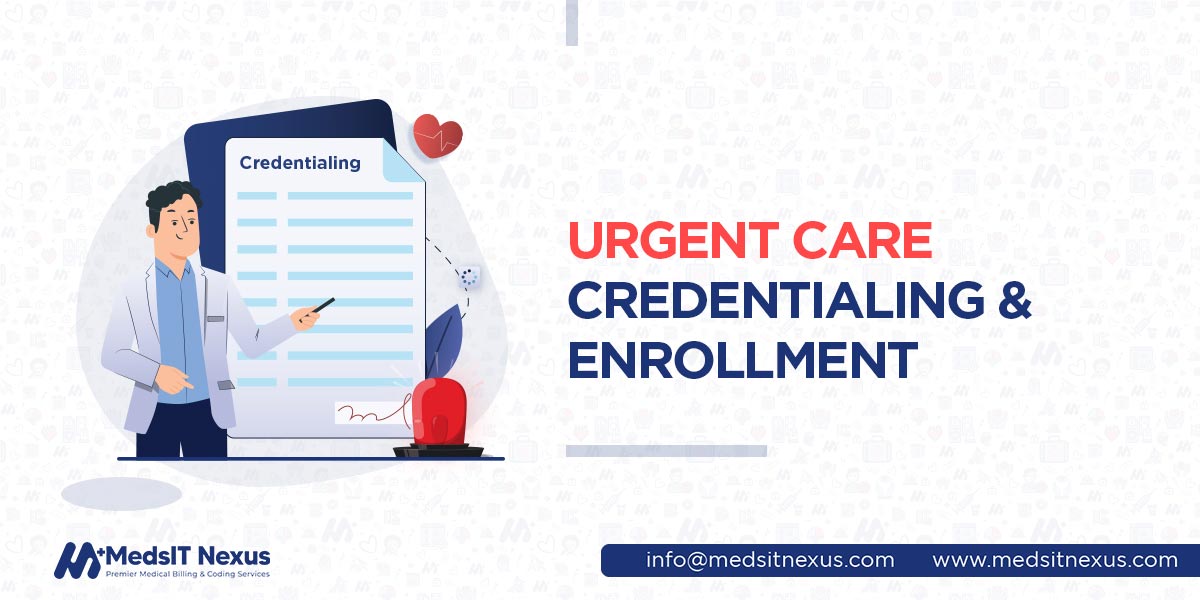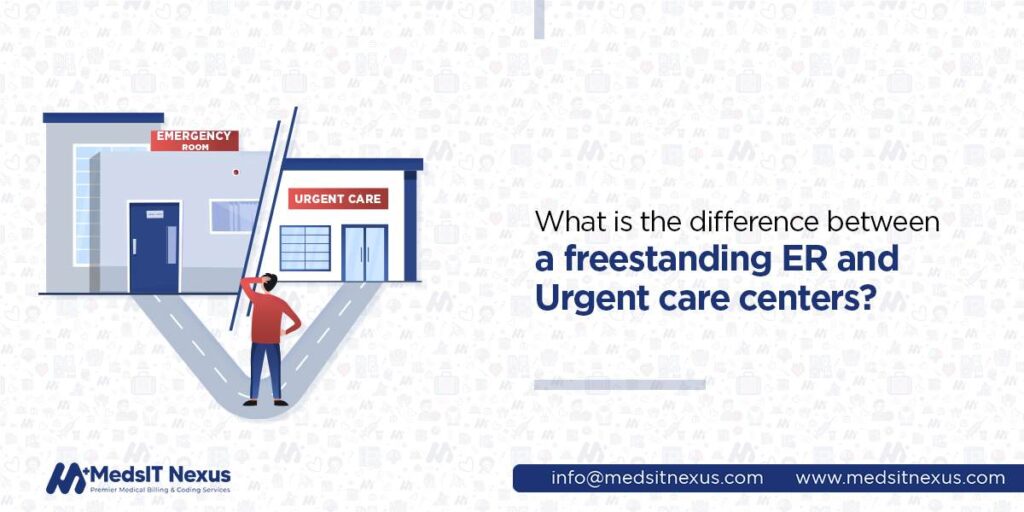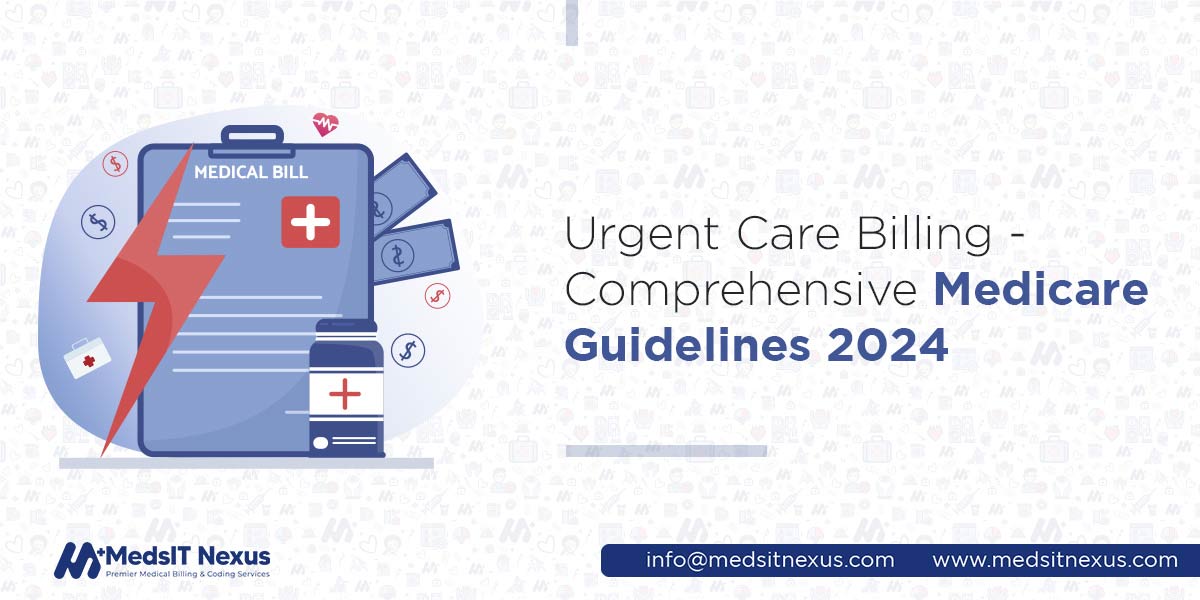Urgent care credentialing and enrollment

The foundation of the healthcare sector is cemented through financial stability, and when it comes to urgent care, it cannot be more accurate. Urgent Care Facilities are the go-to places in case of emergencies that are not life-threatening. They provide care on an immediate basis to those in need. Provider Credentialing and Enrollment in Urgent Care is crucial in determining the fate of the whole system. The utmost importance of both these procedures must be supported. Credentialing, which involves verification and reliability of providers in a healthcare network, goes hand in hand with enrollment and ensures a seamless flow of patients along with financial stability by introducing the insurance fold. Collectively, they improve credibility, providing the practice with the best catalyst to excel and deliver quality care to those in need. To cut short, Credentialing and Enrollment nurtures growth and stabilizes the finances for you. In this article, we will give you an in-depth analysis of how these two decisive processes commence and how they can be of benefit to you. If you wish to boost your practice, give the article a thorough read.
Credentialing Vs Enrollment in Urgent Care
When it comes to urgent care, credentialing, and enrollment are two different processes aimed at
achieving distinct objectives, but they are correlative. Credentialing is much more focused on verifying
providers. It involves professionals going through healthcare provider qualifications, experience, and
competence of the concerned professional. It is a well-rounded process to assess the educational
background, licensure, and any reported acts of malpractice. The primary objective of credentialing is
to decide whether the provider will be able to live up to the standards of care required at urgent care
facilities and expected from a healthcare provider.
The process is succeeded by Urgent Care Provider Enrollment, which is marked by healthcare providers and
insurance networks reaching an agreement. It considers all the matters, like participation agreements
and reimbursement
rates, in addition to their inclusion in insurance networks. Once the process is
completed, the provider can render their services to the incoming patients in an urgent care facility
covered by particular insurance plans that they are enrolled with.
Credentialing Process for Urgent Care
Urgent Care Facilities are compelled to adhere to the rules and regulations stated by the State and National governments. This becomes challenging while hiring providers due to the involvement of credentialing. If there is any negligence in the whole process, it can cost the facility a lot of time and resources. However, a step-by-step approach can save you the trouble.
Steps Involved in the Credentialing Process
The credentialing process in urgent care is a comprehensive procedure that ensures healthcare providers' qualifications, competence, and trustworthiness. This meticulous process involves several key steps:
- Provider Application: The initiation of credentialing is marked by a healthcare provider applying for an urgent care facility or an affiliate network. For the appropriate filing of an application, one must include fundamental information such as educational history, certification, licensure details, certifications, and experience.
- Primary Source Verification: Primary Source Verification in Credentialing includes Communicating with educational institutions, licensing authorities, and previous employers to check for any misinformation on the provider's part. The information thus obtained is compared with the one stated in the application by the provider.
- Malpractice History Check: Provider history is thoroughly filtered to check for malpractice deliberate or indeliberate. It might involve probing any pending or past cases or checking for disciplinary lapses. This serves as a check to ensure that the provider is liable. Also, work history is reviewed to ensure that there are no unjustified gaps in the services that may be a breed of malpractice.
- License Verification: The credentialing team confirms the provider's licensure by contacting the relevant licensing boards. This step ensures that the provider's licenses are current and in good standing.
- Review: After completing the verification process, a credentialing committee consisting of experienced heads who mainly deal with the administration of healthcare facilities reviews the application filed by the provider. Once they finish the review, they suggest approving or denying the application based on their findings.
- Approval or Denial: The decision of the credentialing committee, irrespective of its nature, is forwarded to the governing body of the urgent care facility for their kind review. Citing the recommendations and their own experience, they approve or disapprove the application for credentialing. However, in case of approval, the provider will be allowed to proceed with their practice within the facility, while disapproval might lead to re-credentialing.
- Ongoing Monitoring: In case of approval, the provider will be continuously monitored. If the provider fails to adhere to the guidelines during a specific period, they might be re-credentialed to reassess whether they will be able to meet the criteria. Apart from this, after a designated time period, the existing credentialing becomes invalid, and the process should be repeated from the word go.
Documentation and Qualifications for Healthcare Providers
Urgent care centers have no room for error in their documentation required for credentialing. If an error occurs, it will act as a hurdle between patient and quality care. The detailed set of requirements might be specific to a state; for Instance, Credentialing requirements in New York might vary from those in Chicago. However, there are still some standard requirements that are generic. It includes the compulsion of healthcare providers to provide proof of their medical degrees, certifications, and training. A provider must hold a valid legal license. The license reflects that the provider can legally practice medicine in a particular state. Also, it's mandatory for many healthcare providers, specialists in particular, to hold board certificates. It portrays the specialties of the provider in a specific domain of medicine. An appropriate justification is required if there are any gaps in practice due to undisclosed reasons. The officials then further investigate the issue at hand. The providers are also expected to hold malpractice insurance that gives them immunity in the wake of any claims or litigations. To ensure that providers are aware of developments in their field, proof of ongoing education and professional development must be there. Last but not least, it might be mandatory that providers are asked to provide professional references to test their ethical conduct.
Costs and Timeline of Urgent Care Credentialing
Many urgent care facilities tend to charge upfront application fees from
providers to process an
application. These fees can vary depending on the facility. Additional expenses might be applicable if
legal counsel is deemed necessary to deal with the complexity of reviewing and negotiating contract
terms. However, background checks and validation processes might incur extra expenses, often considered
hidden by the providers.
The process of Credentialing involves a lot of technicalities that can make the process lengthy. It can
take weeks to months. Credentialing alone can take up to 90 days, with contract negotiations that take
an added 30 to 45 days.
Benefits of Urgent Care Credentialing for Your Practice
Credentialing, when done in the proper manner, yields favorable results for urgent care facilities. It facilitates the delivery of quality care and enhances the facility's image. It contributes to financial stability and makes a practice look more credible. It is no hidden fact that credentialed providers experience increased patient trust. It ultimately leads to high patient retention rates. Also, credentialing ensures that you are in continuous contact with insurance companies providing timely reimbursements, minimizing the chances of financial uncertainty. Credentialed facilities enjoy a sense of quality that is lacking in others. It also increases the chances of networking for the professionals. All this while maintaining legal compliance.
Challenges for Credentialing in Urgent Care:
Credentialing is not a walk in the park, neither for the provider nor for the concerned authorities. Therefore, outsourcing this task to a credible organization like Meds Nexus is the way to go. This is because it involves various challenges that newbies need help to handle appropriately. The foremost is the length of the procedure, which can be further extended due to unexpected delays hindering providers in fulfilling their professional commitments. As is the nature of healthcare, rules and regulations for credentialing are flexible. To go with this, they are highly complicated and nearly impossible for laymen to understand. Also, proper communication between the parties can be improved. Also, securing the sensitive data provided by the provider applying for credentialing can become challenging. If there are any gaps in employment, decision-making is seriously tested as the sole tool to weigh the justification might be the experience of the decision-maker. Also, providers at urgent care facilities need to be credentialed with multiple payers, which can increase the administrative burden on the providers.
Enrollment Process for Urgent Care
The enrollment process acts as the backbone of urgent care facilities. They serve as a bridge to link insurance networks with healthcare providers, leading to an expanded patient base. The process is complex by any means and involves the following steps.
Steps Involved in the Enrollment Process
- Provider Application: The process starts with the healthcare provider applying to join a healthcare network or an insurer's panel. The necessary documents, including credentials, license, and certification, must be attached to the application.
- Provider Information Verification: The concerned organizations verify all the documents attached to the application. It involves running background checks on the providers.
- Contract Negotiation: When the documents are successfully verified, contract negotiations take place. In these negotiations, the provider and insurer bargain on reimbursement rates, terms of association, and other vital points.
- Contract Review: After reaching an agreement, both parties should comprehensively review the contract to ensure it resonates with their goals and requirements.
- Contract Signing: After a thorough review, both parties formally sign the contract, making it official. After this, a provider is considered enrolled in an insurance network.
Required Documentation and Qualifications for Enrollment:
No ambiguity must remain regarding documentation to make a longstanding partnership with the insurance network. So, the providers must provide solid proof for the licenses and certifications that they are bearing. This serves as an effective solution to tackle the issues of legal compliance. To go with it, many insurance networks make it mandatory for providers to carry malpractice insurance. A work history with appropriate justifications for any malpractice or gaps in employment is also needed. Liability concerns while enrolment for urgent care centers must be given due importance. All parties involved should provide evidence of appropriate coverage to safeguard themselves against liability.
The Timeline & Cost for Enrollment (Providers) in Urgent Care:provider
The timeline in relevance to enrollment in urgent care depends on various factors. Enrolment begins with a provider showing a keen interest in practicing at an urgent care facility. Citing this, their credentials are reviewed, followed by an interview, which allows the providers and stakeholders of urgent care facilities to interact and discuss terms and conditions. Once they formally reach a contract, the final step is onboarding the provider. All of this process generally takes place in 10 to 12 weeks. It can be broken down as follows:
- Week 1-2 The provider completes and submits the enrollment application while the payer reviews it.
- Week 3-4: The payer demands any specific information that is payer specific which the provider provides.
- Week 5-6: Verification of the provider's credentials along with running background checks on them to check for instances of malpractice.
- Week 7-8: Final decision is made following an interview with the stakeholders and negotiation regarding the reimbursement rates takes place.
- Week 9-10: The provider thoroughly reviews the contract, signs it and returns it to the payer.
- Week 11-12: The provider can begin seeing patients and billing the payer.
The cost of enrolling providers in urgent care facilities can vary depending on the factors involved. For instance, some expenses are deemed direct. It includes the time and workforce costs associated with accomplishing the enrollment process. Additional charges are incurred in the wake of the procurement of third-party services to render contract negotiation services. Thus, Indirect costs are not typical but are worth mentioning, including the loss of revenue due to the ongoing enrolment process because the provider cannot see patients. Even with everyone charging so much for enrollment, you have a pocket friendly option of MedsITNexus on the table which offers the same services for a very reasonable price.
Benefits of Enrollment at Urgent Care Facilities
Why perform this long process of enrollment that demands time and expense? Well, it is clear as daylight that the hassle of enrolling providers at urgent care facilities has unparalleled benefits. It is well-known that providers at urgent care facilities can charge more than those at other facilities. The providers who are enrolled with insurance networks can cash on this opportunity. Registered providers are most likely to see more patients as compared to non-enrolled providers because they are deemed more trustworthy and also because they entertain insurance plans.
Challenges for Enrollment in Urgent Care:
In the landscape of urgent care facilities, the most common challenge that providers encounter is the process's length. Those seeking enrollment should submit a detailed application fulfilling all requirements. Processing of the application can take months. Apart from that, the distinct needs of different urgent care facilities complicate the process. Those seeking to shift from one facility to another might have to enroll again. It might also involve receiving adequate training to get a sound knowledge about facilities' do’s and don'ts. The essence of urgent care demands that the providers enroll with multiple payers, significantly increasing their administrative burden.
Urgent care credentialing and enrollment simplified by MedsITNexus
Urgent Care Credentialing and enrollment can give you some severe headaches. As the process involves a lot of complexities, your practice hangs in the balance. However, MedsITNexus comes with innovative and proven strategies to provide you with a hassle-free experience. Our experts save you all the essential minutes by credentialing you with multiple buyers on short notice. We accomplish it by employing advanced technologies to submit applications, get regular follow-ups, and track deadlines. We ease the administrative burden on providers due to the credentialing and enrolment. We have a history of compliance and error-less services delivered to hundreds of our clients. Moreover, we have a team well versed in laws governing urgent care facilities, plus up-to-date with the ever-changing medical billing trends.
Samuel White, MBA-HC, CPAR -
Lead Author & Senior Healthcare Revenue Cycle Strategist at MedsIT Nexus
Leads editorial process for the publication of Technical RCM guides, reimbursement optimization case studies, and compliance-focused research content, expert evaluations of RCM software and medical billing solutions.






